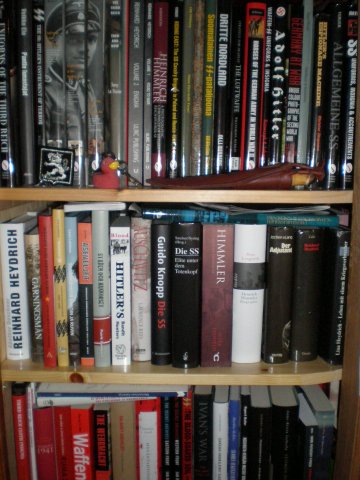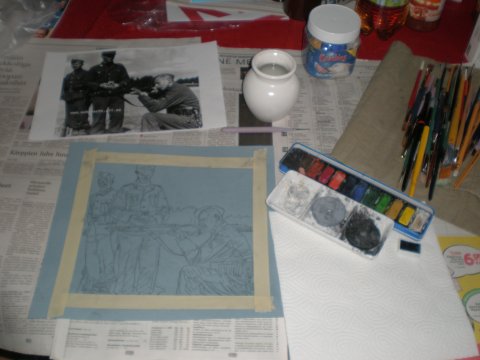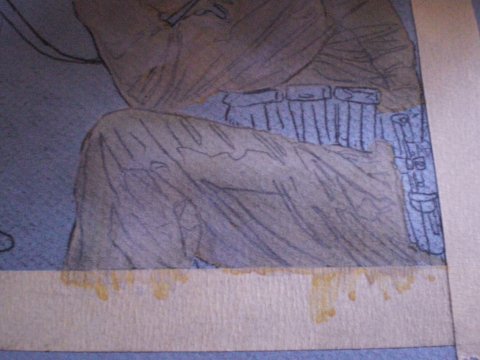At first we must have some kind of idea humming in our small head. I'm not that imaginative person, so I usually "steal" model pictures from the Net or then I just leaf through my own book collection. Some people don't consider this kind of painting as real art - they think that everything must be created by your own imagination but I don't mind. I'm happy with my small paintings and that's enough.
I've always been interested in military history, so I have plenty of different material concerning uniforms, troops and all things possible - mostly German. And because the SS is the number one in my "fascinating things in the past" -list it is no surprise I have lots of books about Himmler's sinister organisation.
Quite often I must check something - small details, colours etc. from my home library.

Ok, the prologue is over.
Nowadays I'm nearly always using watercolours when I paint. They're cheap and versatile material. I also have a set of aquarelle colours but they're often bit too pale for my painting style. If you're looking strong-coloured aquarelles, I can recommend Russian ones, they have richer tones than "Western" ones. And they're cheaper too ;).
I always use thick paper. There's no point buying cheap paper ...at least if you're as harsh painter as me. Fraying paper fibre is one of the most annoying things I know. You just add more colour layers and the paper becomes wet and the surface wears off and looks awful.
I sketch with charcoal and use ordinary hairspray as fixative (it is cheaper and smells better than the actual thing - and it suits me fine!). Then I mark out the actual painting with masking tape. The tape keeps background colour nicely in order and leaves clean border around the actual picture.
Some people might have ateliers but I use the kitchen table covered with old newspapers :D.
Here's how the whole thing looks when I start painting. Lefranc colours, blue Canson paper and lots of brushes, mainly small sizes - bigger ones are left for doing primers etc. My "handwriting" is quite detailed so I won't need big brushes that much. I also use much brushes originally meant to be used when painting porcelain. And I prefer brushes with synthetic bristles. Squirrel, pony and pine marten all wear out too fast. I also have clean cotton towel for drying/clea ning the brush and getting rid of too wet paint.
First I add the primer. Here I use yellow ochre because I'm going to paint a Waffen-SS drill uniform - a grayish-brownish thing. I use thin layer of colour, diluted with water. I quickly dip the brush on the cotton towel before I start to add the ochre on the actual painting. At this stage I don't mind about shadings or small details, I just paint the area all over. Ochre is neutral and light colour so it is perfect for this kind of use.


